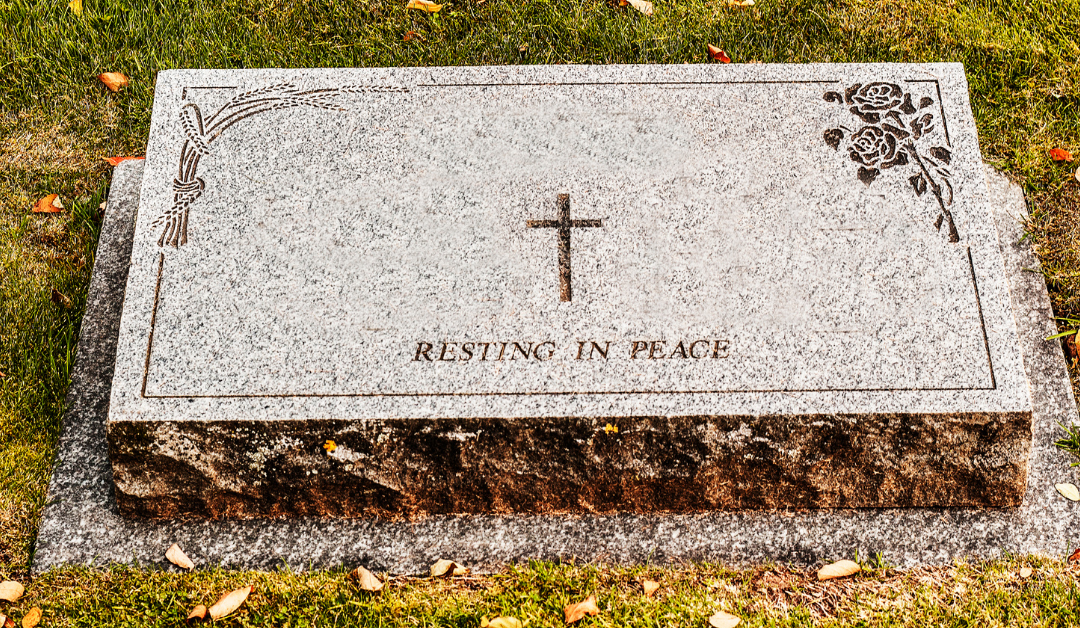We all have different ways of processing grief when a loved one dies. For some, the grave marker can provide a sense of closure and a way to immortalize the memory of your loved one. However, knowing what you can and cannot do with a grave marker and how to choose a marker can be a tough decision. This month, we’re diving into the typical cemetery regulations related to grave markers, and how to choose a marker that best memorializes your loved one.
Cemetery Regulations
Before choosing a grave marker, be sure to check your local cemetery’s regulations and guidelines, as most cemeteries will regulate the headstones placed on graves within their grounds. These regulations will often outline certain requirements, like the size, material, and style of headstone that is allowed. For example, space limitations may prohibit larger monuments or markers. Make sure you understand what is and isn’t allowed before consulting with a headstone supplier or your funeral director. Generally, headstones and markers are installed several weeks and up to several months after the burial to allow for ground settlement, so you will have some time to consult with the cemetery and the supplier to have the headstone or marker made.
Choosing a Grave Marker
Once you’ve had a chance to research your cemetery’s regulations and guidelines, you can make a more informed decision on the type of marker, its material, and potential epitaphs, verses, or other engravings.
First, start by choosing where to get the headstone or marker. Typically, the funeral home or cemetery will help you select a headstone as a part of your funeral package and will handle all of the arrangements. Another option would be to choose to work directly with local suppliers and make your own arrangements. If you choose the latter, be sure to contact the cemetery to inquire about their installation services.
Select the Marker Type
Next, choose the type of marker to memorialize your loved one. There are several options to choose from, including:
- Traditional Upright Headstone: This traditional marker is made of two pieces: the tall and standing upright, called a Die or tablet, and the base.
- Footstone: These markers lie at the foot of a burial grave and are always placed at the opposite ends of the headstone they correspond to. Footstones are used to mark the foot of the grave, creating a boundary for the burial plot.
- Slant Markers: These markers come with a slanted, polished face and are installed on a concrete foundation or granite base.
- Niche Marker or Columbarium Headstones: These plaques are typically found in mausoleums or a columbarium, and are attached to the wall outside of a niche.
- Lawn-level Marker: As the name suggests, these markers are level with the ground.
- Memorial Bench or Seat: These are typically made of wood, stone, metal, or other synthetic materials, and are typically placed in public places to commemorate a person who has died.
Choose the Marker Material
Just like selecting the marker type, there are several materials to choose from as well. These include:
- Marble: This material is great for carving intricate designs. However, the downside to marble is that, when exposed to the mild acid found in rainwater over several years, the inscription can become difficult to read.
- Granite: Granite is a popular gravestone material because of its durability and color variety. Granite is also the most budget-friendly option.
- Bronze: This material is also popular for its durability and distinguished appearance. However, the effects of weathering can damage the look and quality of the marker over time.
- Sandstone and limestone: These materials are great because of how easy they are to carve. The drawback, though, is the material’s durability.
Personalizing the Marker
After you’ve chosen the style of the marker and the material (keeping in mind your cemetery’s restrictions/guidelines), you can personalize the marker. In addition to your loved one’s name and their birth and death dates, consider adding epitaphs, verses, or other symbolism that reflects an important aspect of their life or interests. In addition to personalizing the marker itself, you can add accessories, like a vase for flowers, photographs, or special lighting, like candles or solar-powered crosses and angels.
Planning Ahead
It can be difficult to make decisions after a loved one has died, as emotions and grief often take control. We recommend planning these details out ahead as much as possible to avoid emotional overspending and the stress that often comes with making difficult decisions. Learn more about how you can pre-arrange your funeral, or chat with a member of our team today to get started.

